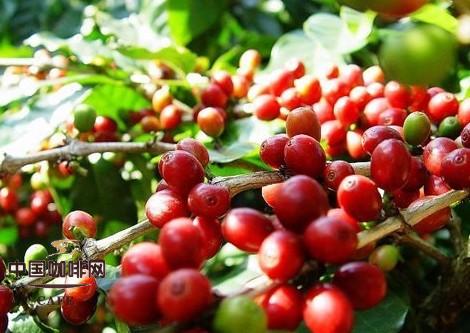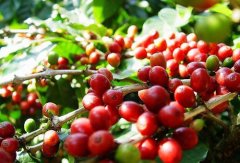Coffee Grinding knowledge the relationship between Coffee and Grinding degree
One of the key factors in making a good cup of coffee is grinding. Proper grinding can fully extract the organic substances that produce flavor in coffee, and improper grinding may lead to excessive or insufficient extraction of coffee. Either way, the coffee will not taste good enough and may even have an unpleasant taste. Coffee can be fully extracted only when it is properly ground. About 30% of the coffee is soluble in water, and the remaining 70% is insoluble in water and xylem. The fascinating flavor of coffee is due to the fact that 30% of the organic matter dissolves in water, stimulating taste buds and olfactory bulb cells, including the well-known multiple flavors of sour, sweet, bitter and salty (with the addition of a fifth "fresh flavor"). How to adjust the best grinding has become a serious subject that can not be ignored.
However, the drawback is that when 30% of the substance is completely dissolved in the coffee liquid, it is not entirely a good thing, when the coffee tends to be too bitter and astringent (mostly caused by organic substances such as quinine and tannin). Generally speaking, the extraction rate is higher than 22% (this is not an absolute standard), which is called over-extraction. The obvious bitterness and tannins will cover the original delicate flavor of the coffee. The reason why this happens is usually related to too fine grinding and too long reaction time (that is, contact time with water). In the case of espresso, overextracted coffee tends to be dark brown at the edge of the Crema, rather than a typical yellowish brown. The taste is almost masked by bitterness and scorching taste.
On the other hand, if the extraction rate is less than 18%, it can be called insufficient extraction. Because the amount of organic matter dissolved in water is lower than the average level, coffee tastes thin, lacks layers and is prone to dilution, which is characteristic of insufficient extraction. In the case of espresso, the underextracted coffee solution has less Crema on the surface, sometimes even no Crema at all.
In recent years, through a special optical refractometer, the total dissolved solid (TDS,totaldissolvedsolids, unit is mg/L) can be measured according to the refractive index change affected by the amount of solute, and then the weight of soluble organic matter in the solution, which is commonly known as concentration, can be calculated. When a cup of coffee contains less than 1% of the substance from coffee beans, our sense of taste usually determines that the cup of coffee is too light. On the contrary, if the content is higher than 2%, it will generally feel too strong. The differences between nationality and habitual taste are reflected in the concentration standards of different coffee boutique associations. For example, the best concentration set by the American boutique coffee association SCAA is between 1.2% and 1.4%, while by Nordic standards, the preferred concentration is between 1.3% and 1.5%.
When the grinding particles are fine, the contact time is relatively shortened. At the same time, because the particles are finer, the contact area with water becomes larger, and the matter that can be dissolved is also relatively increased. Furthermore, both the degree of coffee grinding and the amount of coffee will directly affect the contact area with the solvent. The more powder, the finer the particles, the larger the contact area with water. When the expected concentration (Strength Concentration) falls in a certain range, the reaction time is relatively shortened.
Of course, for random drinking, the best extraction rate and concentration are not absolutely necessary, and the expensive optical refractometer is not necessarily among the household cooking tools. But mastering every cause of the daily experiment of coffee brewing, excluding problematic elements, can help you get a cup of black water away from bitterness. The quantified concentration and extraction rate are the vanguard of the detection.
Whether it's a hand grinder or an electric grinder, choose grinding tools that can adjust the thickness and uniformity as much as possible, and at the same time, grasp the principles of fresh grinding to avoid oxidation and aroma escape. This week's "coffee addiction test", give yourself a little task, start by looking for the best grinding! Coffee addiction. Also drink and play, with a little bit of obsession.

Important Notice :
前街咖啡 FrontStreet Coffee has moved to new addredd:
FrontStreet Coffee Address: 315,Donghua East Road,GuangZhou
Tel:020 38364473
- Prev

Why is coffee bitter? How to make coffee less bitter?
Caffeine is the most well-known bitter ingredient in coffee, but caffeine actually accounts for only 10% of the bitter taste. This can be understood from the fact that the concentration of caffeine in roasted beans is not affected by the degree of baking, and that decaffeinated coffee also has a bitter taste. So where does the remaining 90% of the bitterness come from? One of the sources of coffee bitterness is brown pigment. Brown color
- Next

How to choose coffee utensils for hand-brewed coffee filter cup
There are also many kinds of filter cups needed for hand punching, including single-hole filter cups, three-hole filter cups, filter cups with a larger hole in the middle, and so on. If hot water is injected in the same way, the speed of filtration will be different, so the extraction time will also change. The difference in extraction time will lead to a difference in coffee flavor. The speed of filtration depends on the area of the void on the filter cup.
Related
- Beginners will see the "Coffee pull flower" guide!
- What is the difference between ice blog purified milk and ordinary milk coffee?
- Why is the Philippines the largest producer of crops in Liberia?
- For coffee extraction, should the fine powder be retained?
- How does extracted espresso fill pressed powder? How much strength does it take to press the powder?
- How to make jasmine cold extract coffee? Is the jasmine + latte good?
- Will this little toy really make the coffee taste better? How does Lily Drip affect coffee extraction?
- Will the action of slapping the filter cup also affect coffee extraction?
- What's the difference between powder-to-water ratio and powder-to-liquid ratio?
- What is the Ethiopian local species? What does it have to do with Heirloom native species?

